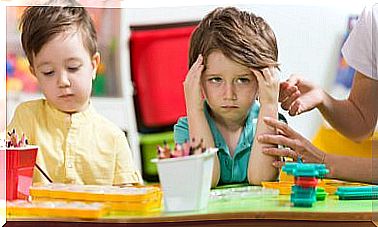Pestalozzi’s Pedagogical Thinking

Pestalozzi’s pedagogical thought is considered a reference in modern popular pedagogy. Born in Zurich on January 12, 1746, Johann Heinrich Pestalozzi was an influential pedagogue and educator who believed that solutions to contradictions and poverty in society could be met with a good education.
Pestalozzi’s pedagogical thought develops within the framework of a cultural and intellectual movement developed in the 18th century, mainly in Europe, known as the ‘Enlightenment’. Its purpose was to demonstrate that reason and human knowledge could combat ignorance and achieve a better world, thus inspiring profound social and cultural changes, such as the French Revolution.
Pedagogical thought of Pestalozzi, his origins and first experiences
His first pedagogical experience began on a farm near the canton of Aargau (Switzerland), in 1975, which he would call Neuhof (New Farm). On this farm, he teaches poor and orphaned children to work with cotton spinning and weaving in a context highly marked by the economic and social crisis in Europe.
Pestalozzi ends his Neuhof experience when he acknowledges his mistake in introducing childhood to the productive world. It is dedicated, then, to the literary world under the influence of the ideas of the Enlightenment movement. He is inspired by one of the main representatives of the movement, Jean Jacques Rousseau, publishing one of his most important works, Leonardo and Gertrude, a book for the people (1781).
Later, he moved to Stans (Switzerland) with the aim of caring for children orphaned by war, and it is where his educational theory of “intuition” is born , later creating a school for the training of educators under the fundamental principles of his method.

This method appears collected in some of his subsequent works, such as in Pestalozzi’s Method (1800), in How Gertrudis teaches her children (1801), a work in which he exalts the educational work of mothers, and in El ABC de la intuición (1803).
Finally, in Yverdon (Switzerland) in 1805 he establishes an institute of education in a boarding school for the preparation of the teaching profession. In this, the pestalozzian principles that defined a renewing spirit of education were applied and whose success attracted students from different countries.
Central ideas of Pestalozzi’s pedagogical thought
Pedagogical principles of his method
- Develops a scientific method for early childhood education that maintains that education does not occur spontaneously, but requires external help. This aid should allow children to use their senses and intuitive faculties to see the world. For which, it is necessary to proceed in a natural and intuitive way, following and respecting the proper course of child development.
- It advocates the need for an education in the family environment, entrusting mothers with that responsibility. In addition, it raises the need for the education of these mothers as an instrument to improve children’s education. He argued that they should be the first affective contact that should be continued later in school through the affective ties of children with their peers.
- He was in favor of co-education, that is, a mixed education. In addition, it raised the teaching of morals and religion, but this had to start in the family environment and then continue in school.
- Develops an education based on the acquisition of knowledge through constant interaction with the environment. This indicates that it puts practice and experience before a theoretical education and based only on books.
- He defended the existence and necessity of the creation of institutions for children lacking economic resources.

Didactic principles of his method
- Teaching of numbers starting from the children’s previous knowledge and starting from the simplest to the most complex.
- Use of concrete materials so that they could practice the exercises, such as tablets with numbers.
- Language teaching by first learning the sound of words and their union in sentences. Later, little by little, he introduced new vocabulary and exercised the children with simple conversations.
- He strengthened language through reading and writing.
- Developed children’s memory through simple explanations of objects and materials, prioritizing descriptions to work on their perception.
- He exercised the children in drawing as a way of learning to measure and reproduce the objects present in their sight. He also argued that drawing exercised hand movement, which laid the foundation for writing.
- He worked physical education focusing on body resistance.
Final thoughts
Like other great pedagogues and thinkers of his time, Pestalozzi’s pedagogical thought meant a great advance in relation to the conception of childhood. Pestalozzi considered that childhood was a stage with its own identity in which the child is not a passive subject who must be endowed with knowledge.
Pestalozzi contributed to consolidate the idea that children are the ones who, with the mediation of adults, should be able, by themselves, to discover the world, and thus learn to think about it.










